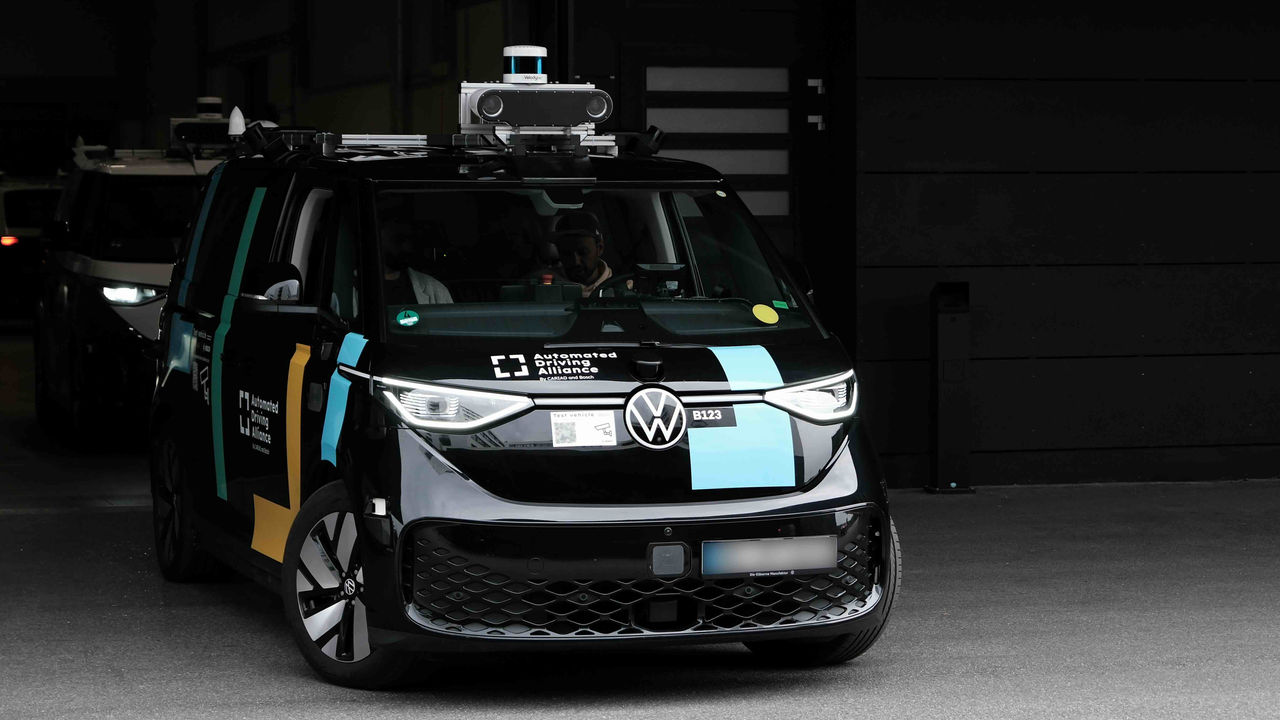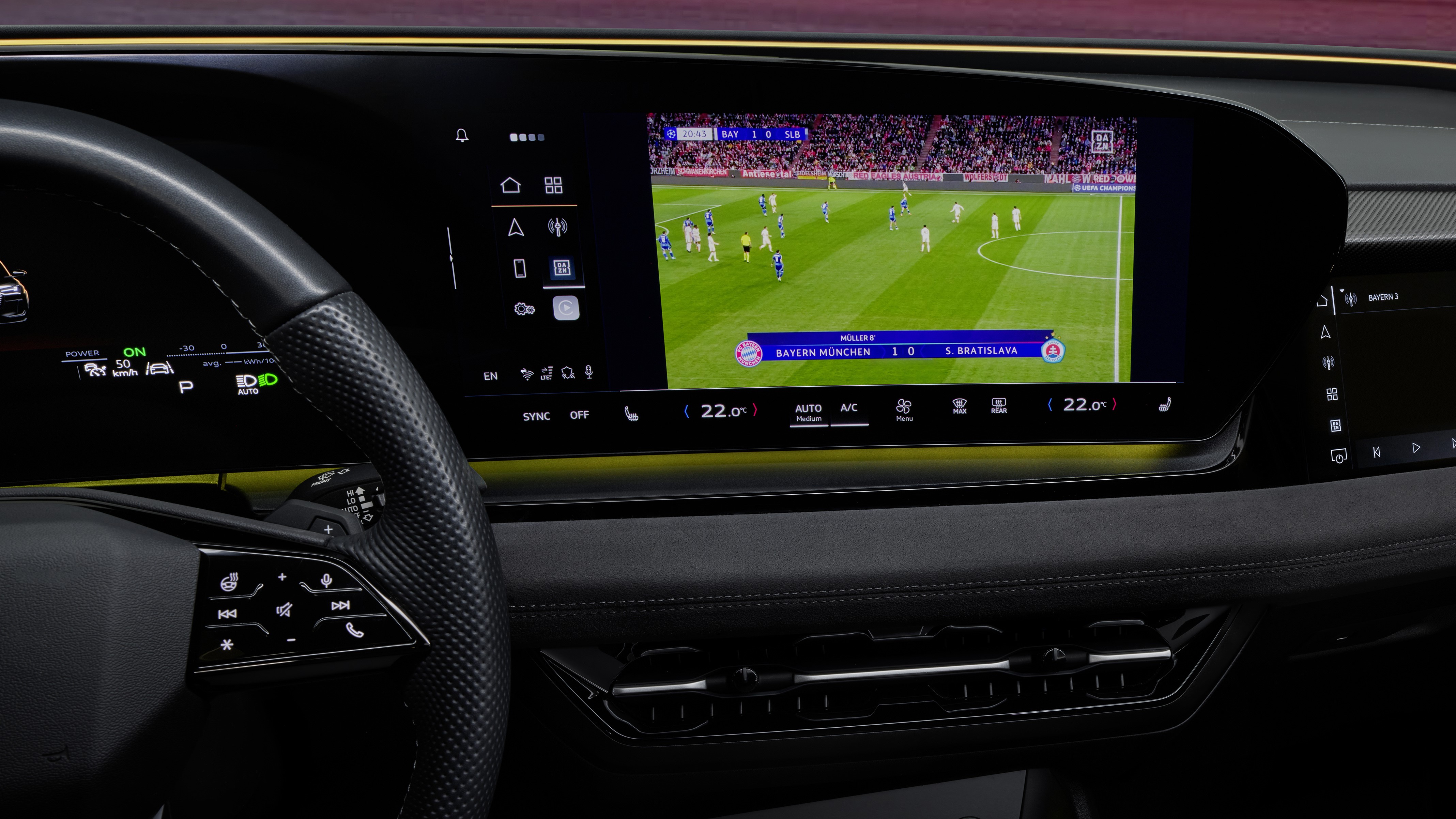Bosch and CARIAD are making automated driving even safer with AI
AI is taking the software stack to a new level

- Bosch and CARIAD develop all the components of their AI-based software stack completely independently.
- AI is intended to help develop driver assistance systems that act as naturally as a human driver.
- Driving functions have been implemented in test fleets and are now being systematically trained with large volumes of data.
- The software stack will be ready for use in production projects starting in mid-2026.
- Automated driving functions from Bosch and CARIAD are to be integrated into the Volkswagen Group’s new architecture for software-defined vehicles.
[Ingolstadt | August 11, 2025] Bosch and CARIAD are intensifying their cooperation within the Automated Driving Alliance: the partners are developing their software stack for Level 2 and 3 assisted and automated driving by making full use of artificial intelligence. To this end, Bosch and CARIAD are expanding their existing approaches to include state-of-the-art AI methods. This should lead to more powerful, more intelligent driver assistance systems that act as naturally as a human driver – taking the driving experience to a new level and making it even safer. The software stack covers all essential cognitive tasks of perception, interpretation, decision-making, and action.
Expanding the use of modern AI brings the Automated Driving Alliance another step closer to its major goal: Bosch and CARIAD want to make automated driving available to millions of private motorists, from the mass-market to the premium segment. Their goal is for the new driving functions to allow drivers to take their hands off the steering wheel in various driving situations. The first versions have been implemented in test fleets and are now being systematically trained and further developed on a daily basis with large amounts of data. A software stack for application in production projects will then be available from mid-2026 onward.
The Volkswagen Group plans to integrate Bosch and CARIAD’s automated driving functions into its new architecture for software-defined vehicles. Covering the range from individual driving functions to the complete software environment, Bosch will also make this scalable solution available to other manufacturers worldwide in order to actively promote automated driving on a broad scale. The project team of the two companies thus impressively demonstrates that dedicated partnership, technological excellence, and a clear focus on goals lead to innovative European solutions.
Peter Bosch, CEO of CARIAD, says: “We’re demonstrating that the German automotive industry has mastered the key technologies of artificial intelligence and automated driving. With the expertise of our developers and engineers, we are securing an integral part of Europe’s digital sovereignty. Our goal in the Alliance is to make the convenience and safety of automated driving systems accessible to as many people as possible so that they can gain valuable time when they’re in their car.”
Mathias Pillin, CTO of Bosch Mobility, adds: “When it comes to getting automated driving systems onto the roads reliably and at scale, data and AI are the key. We can only rise to this challenge together if we work as equal partners and abandon ingrained mindsets. Together with CARIAD in the Automated Driving Alliance, we’re showing how this can work.”
Use of AI in all technology components
The Automated Driving Alliance has been using AI since the partnership began – in, for example, the area of perception for functions such as object recognition. AI is now being used along the entire software technology chain: in everything from object recognition and the fusion of various sensors such as cameras and radars to decision-making and the safe automated control of the powertrain, steering, and brakes. In the future, the automated driving functions will be based on an end-to-end AI architecture in which all modules will become even more powerful and intelligent through the use of AI.
At the heart of these developments is the use of state-of-the-art technology familiar from generative AI applications. Just as language models understand complex semantic relationships, the Automated Driving Alliance’s new AI stack can analyze urban traffic scenarios and anticipate both the current and potential behavior of road users from different sensor modalities. Bosch and CARIAD are making these technological advances within the framework of a modern engineering environment and comprehensive hardware strategy that will ensure scalable and future-proof implementation in all vehicle classes.
End-to-end development of all technology elements with their own source code and intellectual property forms the basis of the development partnership. This enables complete technical control of the source code with clear standards for data protection, security, driving safety, and transparency, as well as the ability to generate innovations quickly and flexibly through source code optimization and then deliver them to customers. The developers design the architecture in such a way that the AI’s decisions and actions remain safe, traceable, and explainable.
The software stack also lays the groundwork for the possible integration of multimodal AI approaches that link visual and linguistic information. Called vision-language-action (VLA) approaches, they can imitate the logical thinking and actions of humans. Such a step would enable even more efficient training and an even deeper understanding of complex traffic situations. For example, VLAs can help detect hidden risks while driving and facilitate the appropriate response.
Large test fleet for daily training of driving systems
The AI stack will make automated driving in the Level 2 and Level 3 range even more robust. Up to the start of production, performance will be steadily improved by continuously collecting enormous amounts of data in order to maximize the system’s safety and reliability. A comprehensive test and validation fleet on public roads is essential for this. The CARIAD and Bosch teams are working together worldwide, testing the driving functions on public roads in Europe, Japan, and the U.S. – underlining their ambitious plan to create a software stack for automated driving that can be used in many global markets. Development is data-driven, which means that the software can be imported into the test vehicles several times a day with new updates and optimizations to the source code.
The technology is already being used in test vehicles such as the ID.Buzz and the Audi Q8. This year alone, hundreds of additional test vehicles will be equipped with a comprehensive set of sensors in order to collect high-quality data. That data helps developers further optimize the AI stack and analyze rare and complex driving situations, known as corner cases. Thanks to the development of an end-to-end, AI-supported software solution, assisted and automated driving will become even safer and more convenient for the consumer.
Contact



.jpg)

